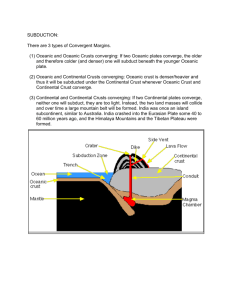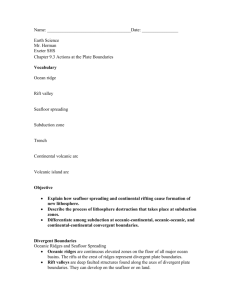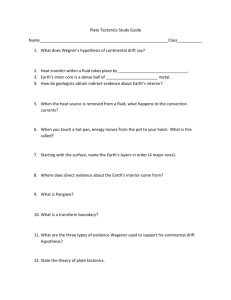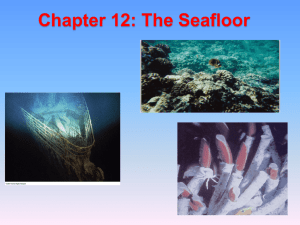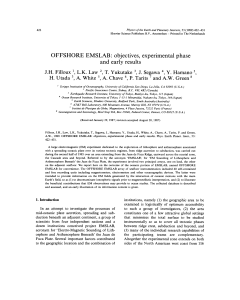The evolution of circum-Antarctic oceanic crust since cretaceous
advertisement
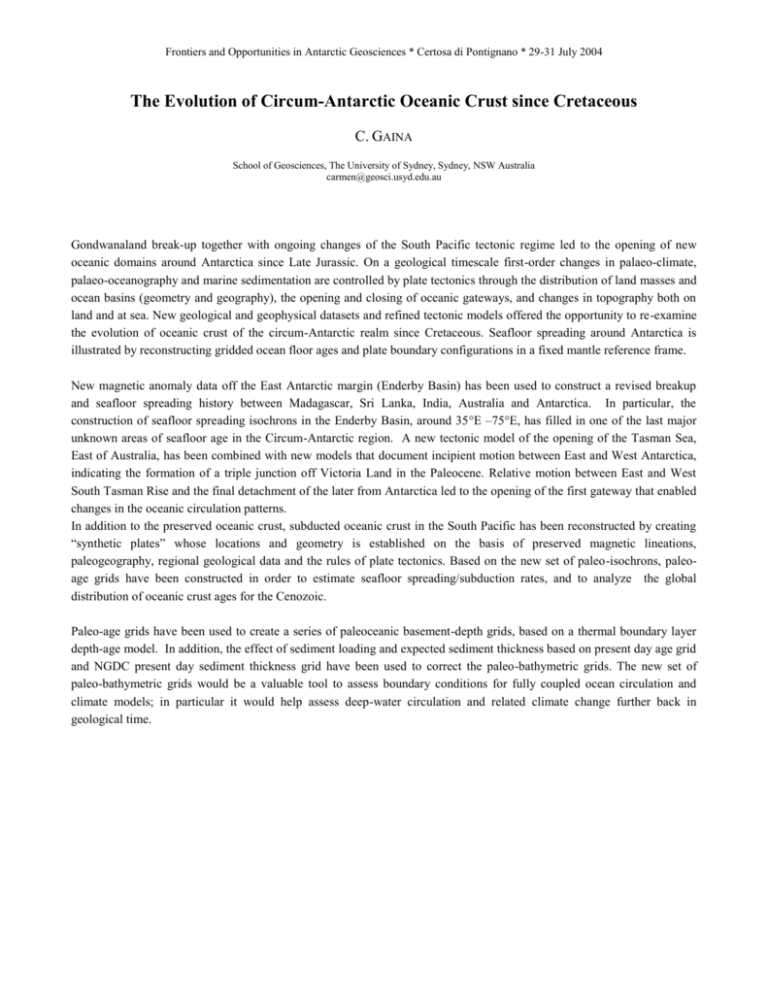
Frontiers and Opportunities in Antarctic Geosciences * Certosa di Pontignano * 29-31 July 2004 The Evolution of Circum-Antarctic Oceanic Crust since Cretaceous C. GAINA School of Geosciences, The University of Sydney, Sydney, NSW Australia carmen@geosci.usyd.edu.au Gondwanaland break-up together with ongoing changes of the South Pacific tectonic regime led to the opening of new oceanic domains around Antarctica since Late Jurassic. On a geological timescale first-order changes in palaeo-climate, palaeo-oceanography and marine sedimentation are controlled by plate tectonics through the distribution of land masses and ocean basins (geometry and geography), the opening and closing of oceanic gateways, and changes in topography both on land and at sea. New geological and geophysical datasets and refined tectonic models offered the opportunity to re-examine the evolution of oceanic crust of the circum-Antarctic realm since Cretaceous. Seafloor spreading around Antarctica is illustrated by reconstructing gridded ocean floor ages and plate boundary configurations in a fixed mantle reference frame. New magnetic anomaly data off the East Antarctic margin (Enderby Basin) has been used to construct a revised breakup and seafloor spreading history between Madagascar, Sri Lanka, India, Australia and Antarctica. In particular, the construction of seafloor spreading isochrons in the Enderby Basin, around 35E –75E, has filled in one of the last major unknown areas of seafloor age in the Circum-Antarctic region. A new tectonic model of the opening of the Tasman Sea, East of Australia, has been combined with new models that document incipient motion between East and West Antarctica, indicating the formation of a triple junction off Victoria Land in the Paleocene. Relative motion between East and West South Tasman Rise and the final detachment of the later from Antarctica led to the opening of the first gateway that enabled changes in the oceanic circulation patterns. In addition to the preserved oceanic crust, subducted oceanic crust in the South Pacific has been reconstructed by creating “synthetic plates” whose locations and geometry is established on the basis of preserved magnetic lineations, paleogeography, regional geological data and the rules of plate tectonics. Based on the new set of paleo-isochrons, paleoage grids have been constructed in order to estimate seafloor spreading/subduction rates, and to analyze the global distribution of oceanic crust ages for the Cenozoic. Paleo-age grids have been used to create a series of paleoceanic basement-depth grids, based on a thermal boundary layer depth-age model. In addition, the effect of sediment loading and expected sediment thickness based on present day age grid and NGDC present day sediment thickness grid have been used to correct the paleo-bathymetric grids. The new set of paleo-bathymetric grids would be a valuable tool to assess boundary conditions for fully coupled ocean circulation and climate models; in particular it would help assess deep-water circulation and related climate change further back in geological time.





